Inside\Within is a constantly updating web archive devoted to physically exploring the creative spaces of Chicago's emerging and established artists.
Support for this project was provided by The Propeller Fund, a joint administrated grant from Threewalls and Gallery 400 at The University of Illinois at Chicago.

Search using the field below:
Or display posts from these tags:
3D printing 3D scanning 65 Grand 7/3 Split 8550 Ohio 96 ACRES A+D Gallery ACRE animation Art Institute of Chicago Arts Incubator Arts of Life audio blogging Brain Frame CAKE Carrie Secrist Gallery casting ceramics Chicago Artist Writers Chicago Artists Coalition Chicago Cultural Center Cleve Carney Art Gallery Clutch Gallery Cobalt Studio Coco River Fudge Street collage collection Columbia College Chicago Comfort Station comics conceptual art Contemporary Art Daily Corbett vs. Dempsey Creative Capital DCASE DePaul University design Devening Projects digital art Dock 6 Document drawing Duke University dye Elmhurst Art Museum EXPO Chicago Faber&Faber fashion fiber Field Museum film found objects GIF Graham Foundation graphic design Harold Washington College Hatch Hyde Park Art Center illustration Image File Press Imagists Important Projects ink installation International Museum of Surgical Science Iran Jane-Addams Hull House Museum jewelry Joan Flasch Artist's Book Collection Johalla Projects Julius Caesar Kavi Gupta Links Hall Lloyd Dobler LVL3 Mana Contemporary metalwork Millennium Park Minneapolis College of Art and Design Monique Meloche Museum of Contemporary Art Chicago (MCA) Museum of Contemporary Art Detroit (MOCAD) Museum of Contemporary Photography (MoCP) National Museum of Mexican Art (NMMA) National Resources Defense Council New Capital Northeastern Illinois University Northwestern University Ox-Bow painting paper mache Peanut Gallery peformance Peregrine Program performance photography PLHK poetry portraiture printmaking public art Public Collectors publications Renaissance Society risograph rituals Roman Susan Roots&Culture SAIC screen printing sculpture Sector 2337 Shane Campbell Silver Galleon Press Skowhegan Slow Smart Museum Soberscove Press social practice South of the Tracks Storefront SUB-MISSION Tan n' Loose Temporary Services Terrain Terrain Biennial text-based textile textiles The Banff Centre The Bindery Projects The Cultural Center The Franklin The Hills The Luminary The Packing Plant The Poetry Foundation The Poor Farm The School of the Art Institute of Chicago (SAIC) Threewalls Tracers Trinity College Trubble Club University of Chicago University of Illinois at Chicago (UIC) University of South Florida at Tampa Valerie Carberry Vermont Studio Center video weaving Western Exhibitions wood carving woodwork Yellow Book Yollocalli Arts Reach zinesInside\Within is produced in Chicago, IL.
Get in touch:
contactinsidewithin@gmail.com
Judith Brotman’s Cautious Optimism

Recalling past, present, and fabricated histories, Judith builds sculptures from thread, self-hardening clay, and words, selecting aspects of their origins to highlight through her own twisted lens. In addition to a studio practice, Judith’s work also extends into others’ homes, asking participants to select texts to read to her for an hour. Deeply relationship tied, the sculptural and performative works express the laborious process of coming to understand anyone, even the work’s creator.
I\W: How does your work address how you come to know another person? What aspect of budding relationships do you aim to explore?
JB: I am interested in irreconcilable opposites and things that don’t fit neatly together. The love stories I’m drawn to are frequently complicated (ie: somewhat messed up); one of my favorites is Frankenstein, the ultimate unrequited love story. I think a lot of my work is a slow read, which is something of a metaphor for how we come to know anyone, even ourselves. If you walk into one of my installations or immersive environments, you will immediately notice there are a lot of white abstract sculpture pieces. If you stop for a longer look, you will see layers of other information— eccentric stitching/suturing with the appearance of a bad surgery, details of book pages/texts, and bits of color that peek through. All of my work has a cautious optimism. There is a still-standing fragility and an awkward beauty, but there is always a little ray of optimism. I am tentatively calling my newest body of work, Slow Time. I am unabashedly Type A and I’ve recently taken some time to pause. It always terrifies me, and then, afterwards, it’s always a revelation. In this case the pause revealed some tenaciously held assumptions (both in and out of the studio) that were in need of re-examination. Slow Time includes work that I’ve tended to separate out from each other: my sculpture work, stitched book pages, and text pieces. The stitched pages were my unsuccessful attempt to drain optimism from my work; similarly, my attempts at getting rid of the bodily from my work is always a bomb. The pages appear to be considerably more direct than my abstract sculpture pieces, but as you start looking carefully, they too become convoluted.
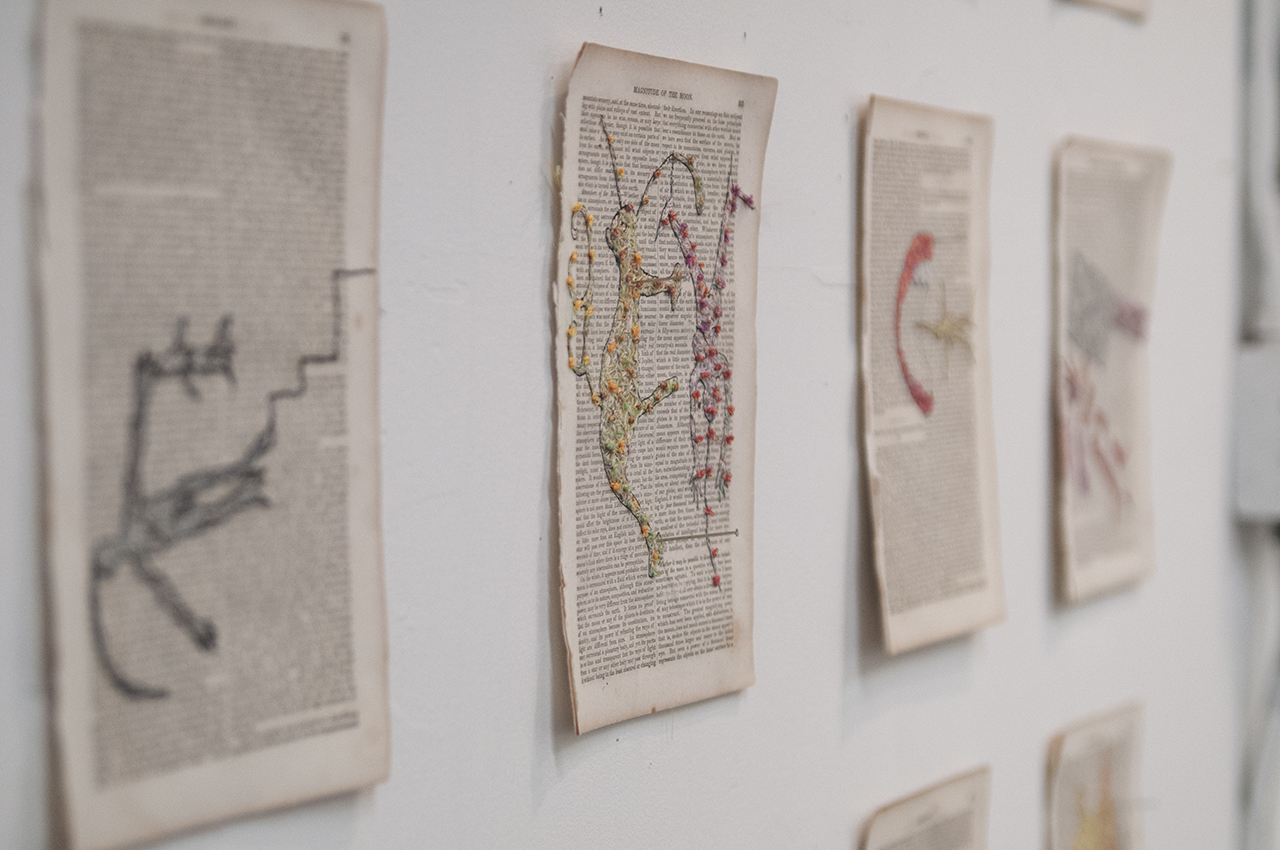
How do these relationships also influence your more performative work like The Reading Project?
That has been an epiphany, occurring in the past year or so. My sculptural and performative work weren’t designed to be conceptually related; as it turned out, there is considerable overlap between them. The Reading Project, in particular, a project where I go to someone’s house and ask them to read to me for an hour is very much about the relationship between the reader and listener (and the relationship each of us has to the text). On the surface, this project seems quite lovely and generous, but there is something imposing about asking someone to take on this task. No one has a free hour these days, and I am asking someone to give me their time. Also, the text that is selected is typically a metaphor for the reader, so there is an embedded vulnerability in participating. Reading out loud for an hour takes stamina. The project has an intensity to it that is not necessarily the first thing you would think of when I describe it or invite you to read. I think of it as “complicated generosity.” You always have a choice of whether or not to participate. I have been astonished to have people tell me that they won’t have time to read to me for an hour for the next three years. The project is, in part, a response to the fact that we all—myself included—seem to be perennially crazy busy.
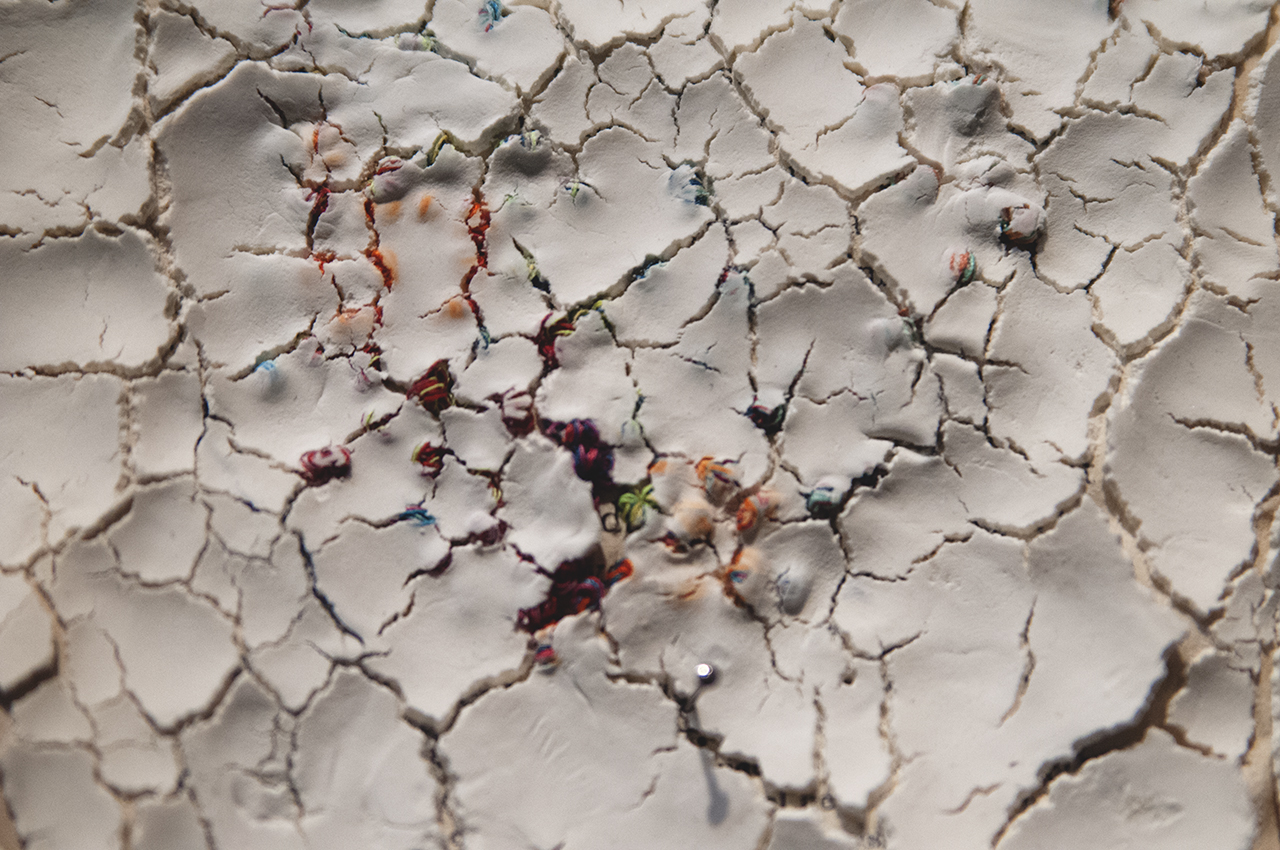
Did The Reading Project lead into the altered pages series? Or was it the opposite? They seem to tied together by you and your subject’s concentrated studies of book pages.
I was altering book pages many years ago, during and after grad school, and then stopped for years. There is a serial component to my work that comes into all my projects. I don’t seem to have too many one-offs. There tends to be a lot of words, a lot of readings, a lot of similar images. I have found that lately I am quoting myself from the past. I fought myself on this for a while until I realized I could now say something that I couldn’t access the first time around. It shifted from a horrible moment in which I felt I was repeating myself to a realization that I had a language that I was adding to: one that I didn’t have 20 years ago.
All of my work has a cautious optimism. There is a still-standing fragility and an awkward beauty, but there is always a little ray of optimism.
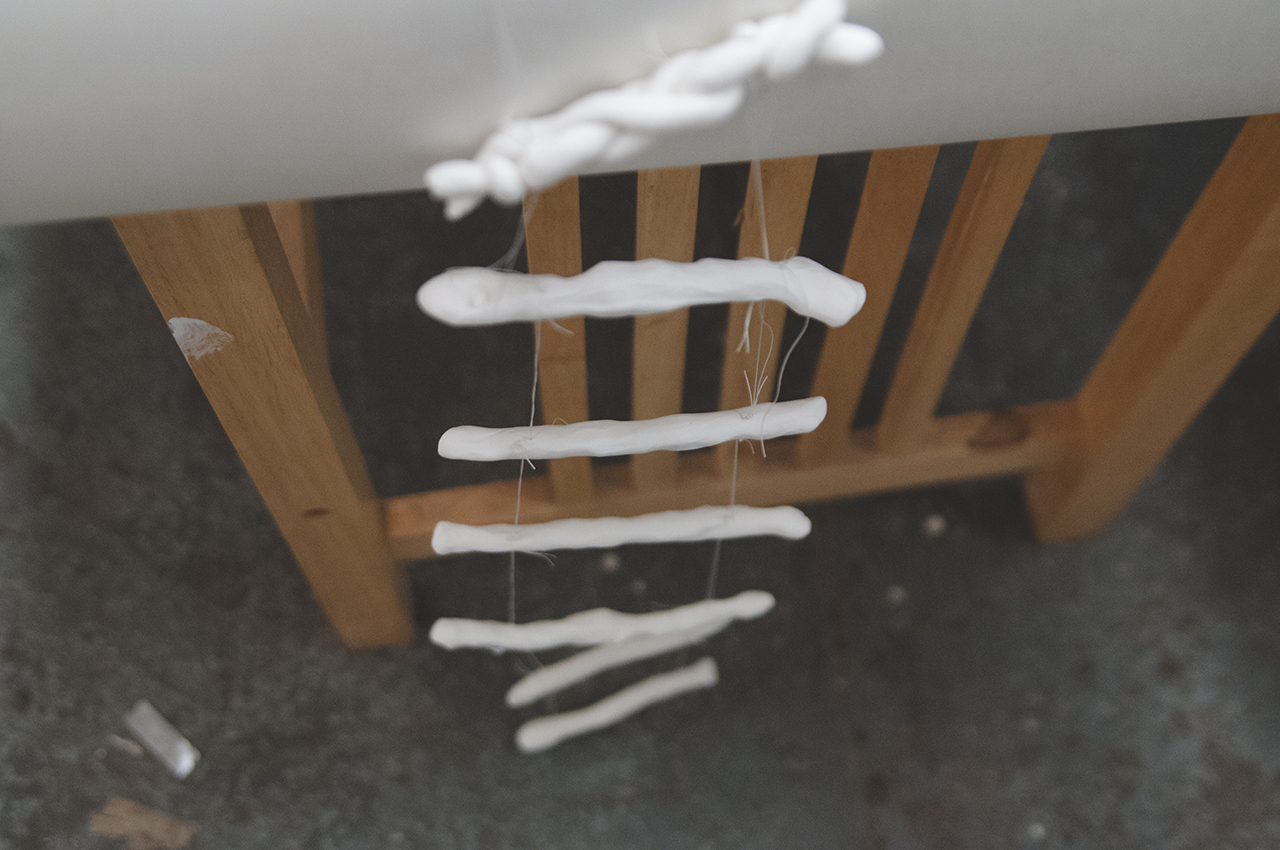
What gave you the window or permission to reaccess the work?
The thing that is not especially cool for artists to talk about—a moment of crisis. I was simultaneously feeling pretty stuck and that there was something that I wanted/needed to crank out. In those moments you have nothing to lose. Maybe you will never share the work, and maybe it doesn’t matter, but you still must make it. Projects involving obsessive stitching are quite pleasurable for me, so there was “a heroin quality” in returning to them. It has only been this fall that all the disparate threads (bad pun) of my work have begun to make sense to me. I have now completed hundreds of these pages. I have altered/stitched all the pages of several texts, one of which, The Odyssey, I will be showing at A+D Gallery this summer. This is going to be the first time I am showing the pages, sculpture, and a text piece together. That is exciting because I had thought they were schizophrenic bodies of work. Maybe they are, but somehow they still seem to work together.
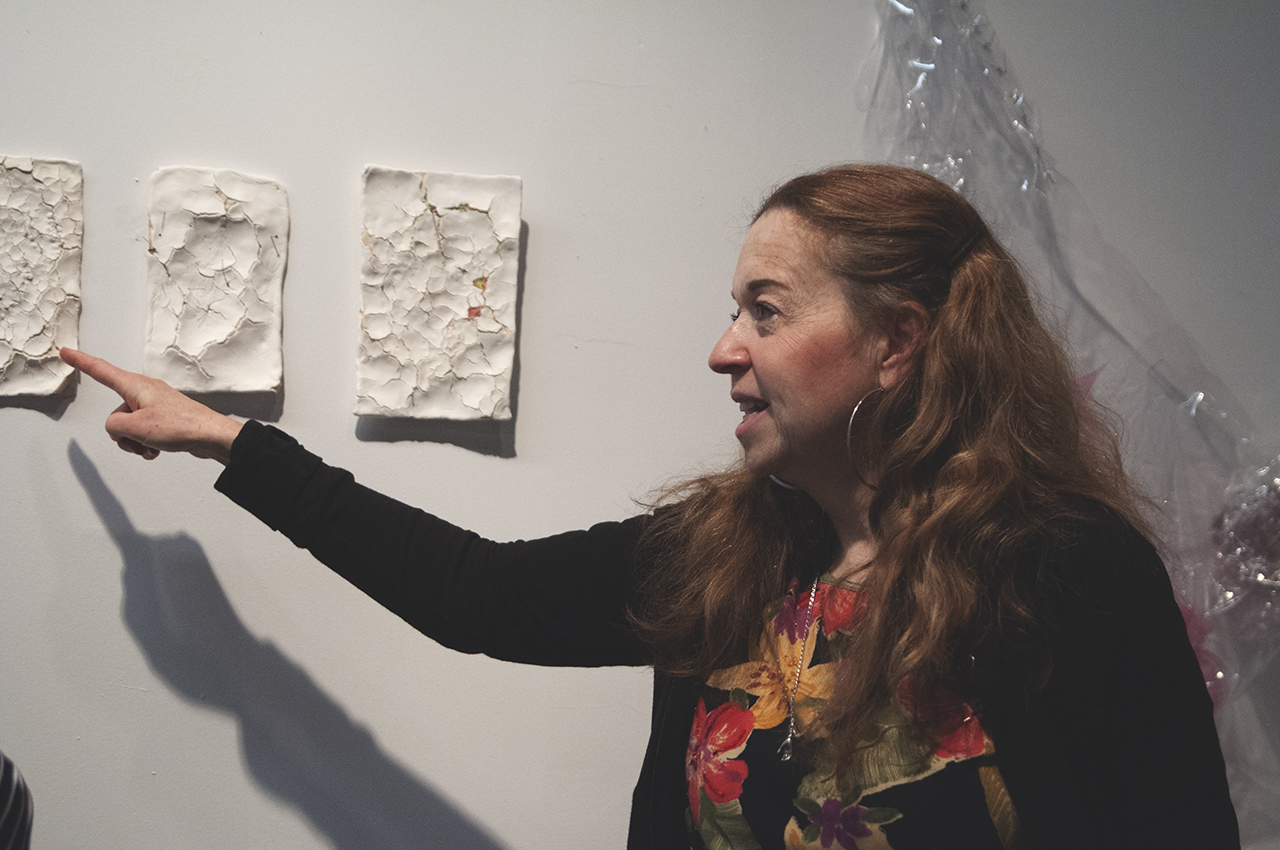
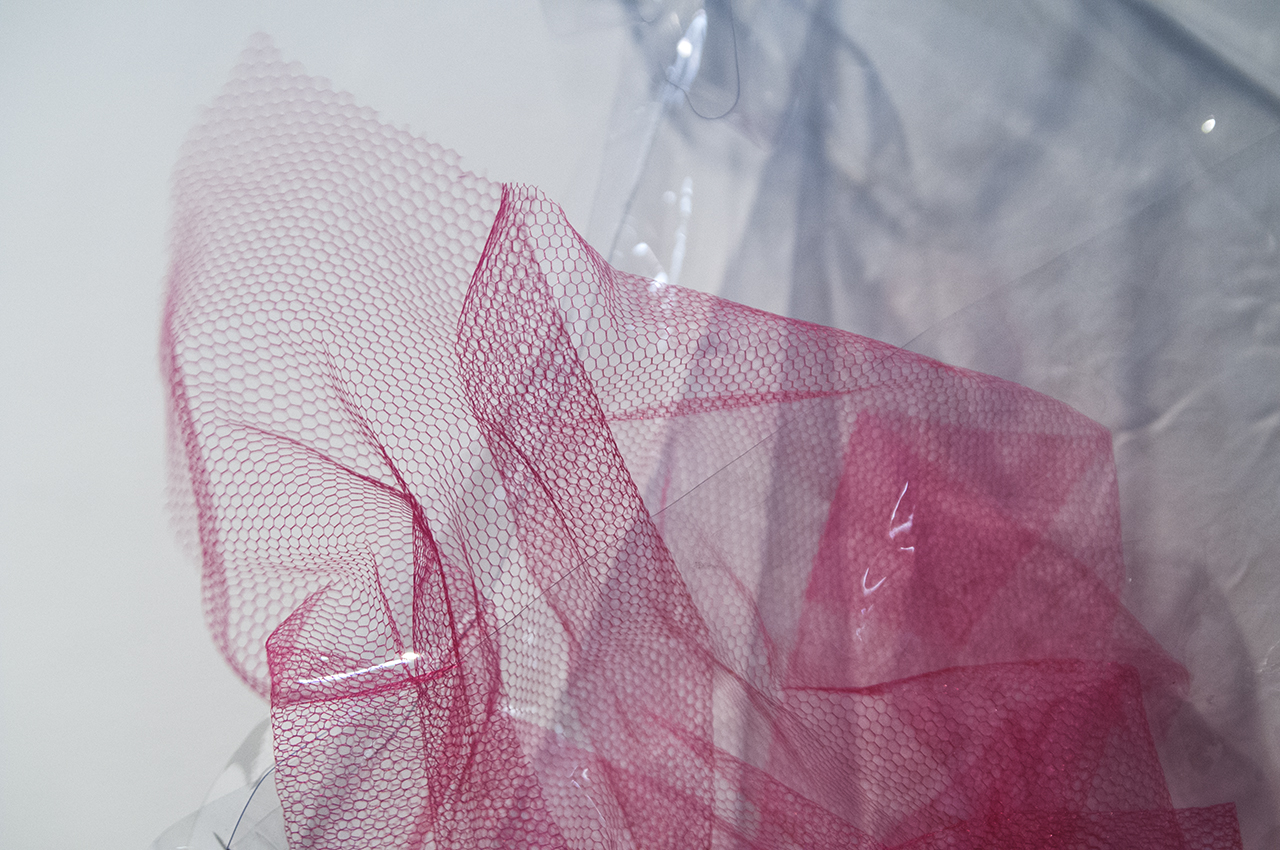
What purpose do your imagined scenarios and text-based work have within your practice?
I am a bit of late-comer to art. I started out pre-med and my interests were much more academic. When I do write a piece it is a different struggle than I have with the visual work. I sometimes feel like I am more of a writer than an artist. There have been times when I thought I needed to choose, but I am ultimately very happy to have both of these parts of my practice. It was great to discover that I was sculpting with words. On some level when I am writing, I do feel a little bit freer than I do with my other work. It seems like I have access to every word I know and can make up more, and do if needed. Writing for me can be quite liberating. It comes in waves, and then there are other times when I cannot write. I crank it out, and crank it out, and crank it out, and then it disappears for a while.
Do you feel as if your lists are discrete word sculptures? They seem to have a similar generative quality seen in your sculpture work.
I actually do. I rearrange the words in a similar manner to what happens in the studio when I assemble my sculpture pieces. With the text pieces, like the mini-narratives in The 93 Dreams of Summer, I will read them aloud, tweaking them over and over again until the rhythm, wording, and flow sound just right. That is the sculpting aspect. A quality that is much more pronounced in my written work is that these pieces are funnier than my sculpture. Despite the play and humor, some of the writing is quite dark. One commonality in all my work is that I’m thinking about the possibility, but not the certainty, of transformation. I feel that in some of the text pieces, and especially in The Reading Project, I have cut away all the objects and images, and it’s just you and me. Depending upon the project: I am giving you a dream, or you are choosing a word to be your own, or you are reading to me. It is a much more focused interaction.
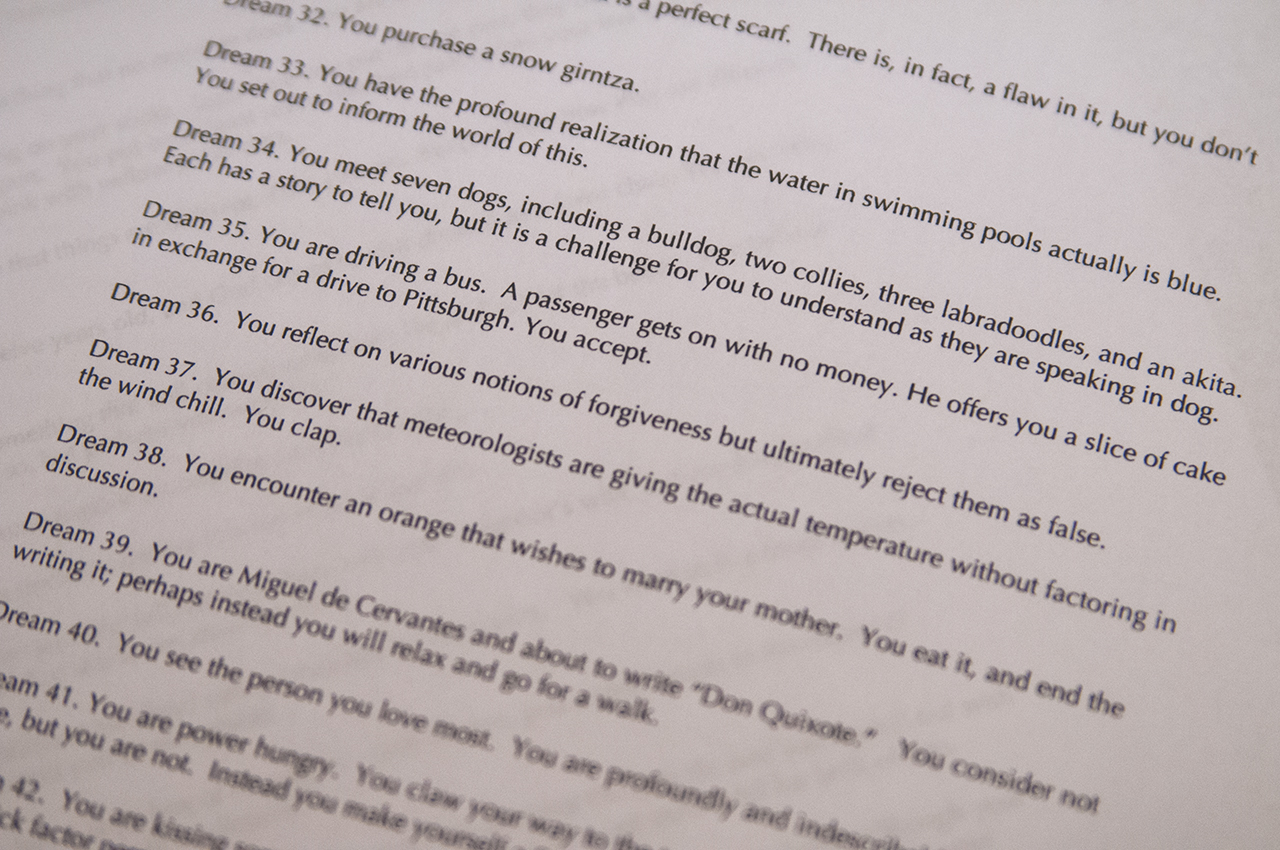
How has caring for your mother the last 16 years affected your practice?
With the exception of an on-going photo series in which I document my visits with her, my work is not about my relationship with my mother. However, as I look back, I can see how the years of taking care of her, as she ages and declines, have had a substantial impact on my work. Discussing this used to be a bit of a conversation stopper in the art world. This always struck me as odd as we aren’t cut off at the knees, existing only in the studio. In fact, artists tend to be unusually responsive to what is around us. My interests were already focused on complicated love stories, possibilities of transformation, the body, things medical and fragility/resilience; I suspect the time I’ve spent with my mother has made all of this a bit more pronounced in my work. In general, my work is what I see and observe and experience but translated through a twisted lens. Nothing is ever a literal reproduction. Typically after I have cranked out a great deal of work, I have to stop for a bit because I have to go back out there and start looking again.
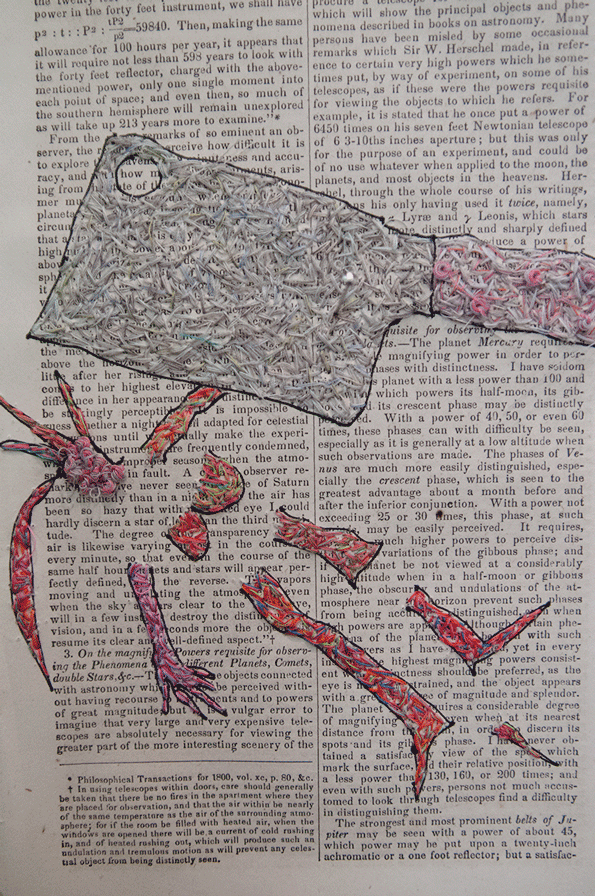
What is reason for covering your altered pages? Is it meant to undo your labor?
In this specific body of work, I have stitched on book pages and subsequently covered both text and stitch marks with self hardening clay. Here material transformations, not uncommon in my work, are part of that larger picture of transformation. There is also something really convoluted about so much labor being done and then hidden. An old question that has been asked of me since grad school is if there is something really nasty or transgressive about altering these book pages. I think of it more as in-between critique and homage. If I were to ask myself if I have the right to cover up/edit Homer, I might not have touched it. But in the end, it creates a new whole to decipher. Much of the work in Slow Time is about re-imagining new possibilities. All of the white and transparent work hovers somewhere between nothingness and the beginning of something else, which is in the process of being formed. I should say potentially being formed; it’s the uncertainty clause that intrigues me.



